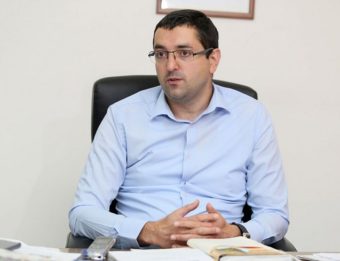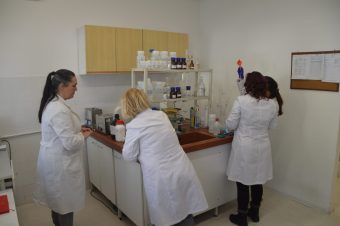
The Institute for Protection and Ecology of Republika Srpska, with nearly half a century of experience, recognizes climate change and environmental pollution as some of the most serious challenges of our time. Through years of research and active participation in international projects, the Institute significantly contributes to improving environmental standards and protecting natural resources. The Institute’s director, Predrag Ilić, shared insights into their current projects, support for local communities, and educational initiatives aimed at children and youth, highlighting the broader societal importance of their work.
Q: What are the most significant climate challenges for Bosnia and Herzegovina according to the Institute’s research?
A: Our country is facing a rapid increase in average temperatures and extreme events, increasingly frequent heatwaves, prolonged droughts, and sudden floods. Snow cover is decreasing, while cities are experiencing a rise in the urban heat island effect. Uneven distribution of rainfall further complicates water resource management, causing hydrological stress, water shortages in summer, and flash floods during winter and spring.
We are actively involved in the revitalisation of water bodies through projects such as WATER-GUIDE and BRIDGEWAT, while projects like RES2FIRE and FireSafe Jezero focus on prevention and education about the increasing risk of forest fires caused by climate change. There has also been a rise in airborne allergens, particularly ragweed pollen, which is monitored and analysed through the AllerShield project aimed at protecting public health. An additional challenge is the insufficient institutional and local preparedness for adapting to climate threats.
IN FOCUS:
- Bosnia and Herzegovina Leads the Region in Issues with Overvoltage
- The July Wildfire Wave In Serbia – An Alarm We Must Not Ignore
- SCC Belgrade – Safety and Stability of the Network as a Priority
Q: Which parts of Bosnia and Herzegovina are currently the most vulnerable to the effects of climate change?
A: According to the NAP – National Adaptation Plan to Climate Change, which provides the most detailed and up-to-date analysis of climate vulnerability in Bosnia and Herzegovina, the most vulnerable areas are those exposed to multiple climate risks, including floods, droughts, landslides, heatwaves, and land degradation. Vulnerability is particularly pronounced in the northeastern, central, and southern parts of the country.

Northeastern Bosnia (including regions around Tuzla and Bijeljina) is prone to frequent flooding and is at high risk of landslides due to soil degradation and inadequate infrastructure. Central Bosnia and parts of the Sarajevo Canton face increased risks from torrential rains and urban flooding, especially in the context of more frequent extreme weather events. Southern Herzegovina, including the areas around Mostar and Trebinje, is confronted with extended periods of drought and a heightened risk of forest fires due to higher temperatures and reduced summer rainfall.
Additionally, lowland areas along the River Sava and its tributaries are among the most exposed to flood risks. In contrast, hilly and mountainous areas, although often rich in precipitation, have high geological vulnerability, especially to landslides triggered by heavy rainfall. Urbanised areas such as Sarajevo, Banja Luka, Zenica, and Tuzla are increasingly experiencing heatwaves and air pollution, further exacerbating the health and infrastructure vulnerability of the population. The NAP document also highlights that institutional and technical vulnerabilities, such as poor spatial planning and limited water and waste management capacity, further worsen the situation in many municipalities.
Q: How does the Institute support municipalities and public institutions in building capacity to adapt to climate threats?
A: The Institute provides significant support to municipalities and public institutions in Bosnia and Herzegovina by helping build capacity for climate adaptation, relying on a multidisciplinary approach, expertise in analytical testing, and experience in implementing international projects. Through active participation in projects such as WATER-GUIDE and BRIDGEWAT (Horizon Europe), we organise educational workshops and training sessions that enable local governments and other stakeholders to understand climate risks related to water management and to develop adaptation plans aligned with EU directives and national strategies.
As part of its activities, the Institute has also contributed to the development of strategic documents such as BIH ESAP 2030+ (Environmental Strategy for Bosnia and Herzegovina), through the creation of the Strategic Environmental Impact Assessment, directly assisting public bodies in integrating climate aspects into policy planning and spatial development. Within the RES2FIRE project (Interreg Adrion) and the FireSafe Jezero programme (SDC), we conduct specialised training for managing forest fire risks, especially in highly vulnerable areas, and develop guidelines for interventions and preventive measures. In addition, through the CircleAware project, we provide technical and educational support for introducing circular waste management in local communities, thereby contributing to climate resilience through more sustainable use of resources.
Interview by Jasna Dragojević
The interview was published in Energy portal Magazine CLIMATE CHANGE



